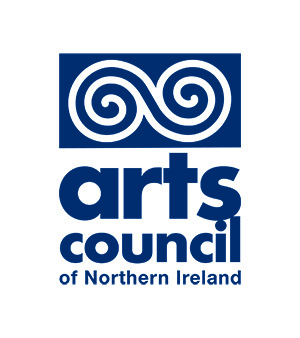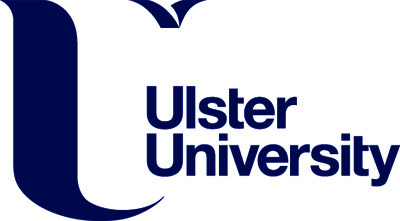You are here: American University College of Arts & Sciences American University Museum 2020 Another Fine Mess
Contact Us
Media Inquiries:
AU Communications
aumedia@american.edu
202-885-5950
Another Fine Mess
Shipsides & Beggs Projects, 2020
Scheduled April 4-August 9, 2020
Presented in collaboration with Solas Nua
This exhibition was cancelled to contain the spread of COVID-19 in 2020. Visit our Museum@Home for digital resources and more information.
Shipsides & Beggs Projects Q&A
Buckle up for "Another Fine Mess" with Dan Shipsides & Neal Beggs of Shipsides & Beggs Projects. In this AU Museum@Home production, the artist duo discuss their online exhibition.
Another Fine Mess: Where the Lines End
Where the Lines End is a new video artwork which emerged from this project. Using raw footage and handmade effects and graphics, it captures much of the strangeness of the subject matter of borders. As it was completed during the lockdown era, it also absorbs the context of the rapidly changing effects of a global crisis. It initially draws from a road trip where the artists explored the Irish borderlands by foot, van, and canoe, re-treading the landscapes, mythologies, and geologies of both a fluid place of imagination and a concrete place of fact.
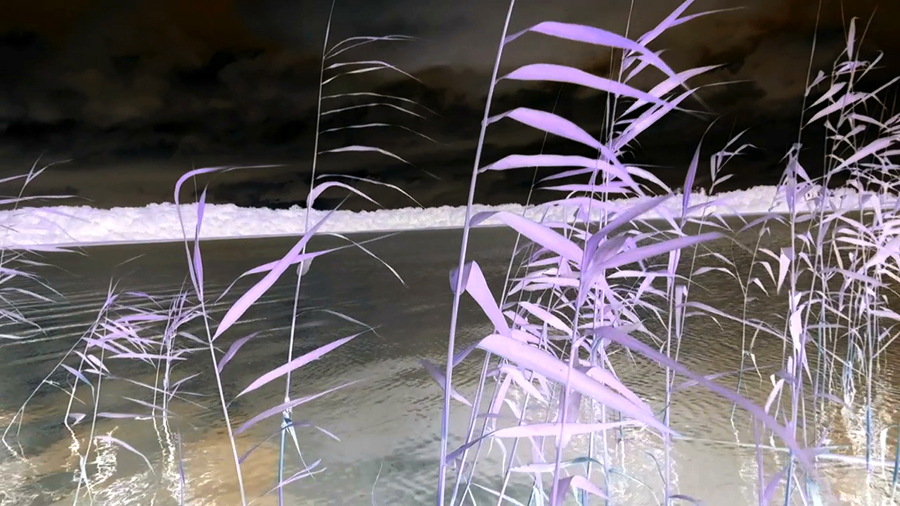
Shipsides and Beggs Projects, Cola Lough Dream, 2020. Video Still, Another Fine Mess. Credit: Shipsides and Beggs Projects.
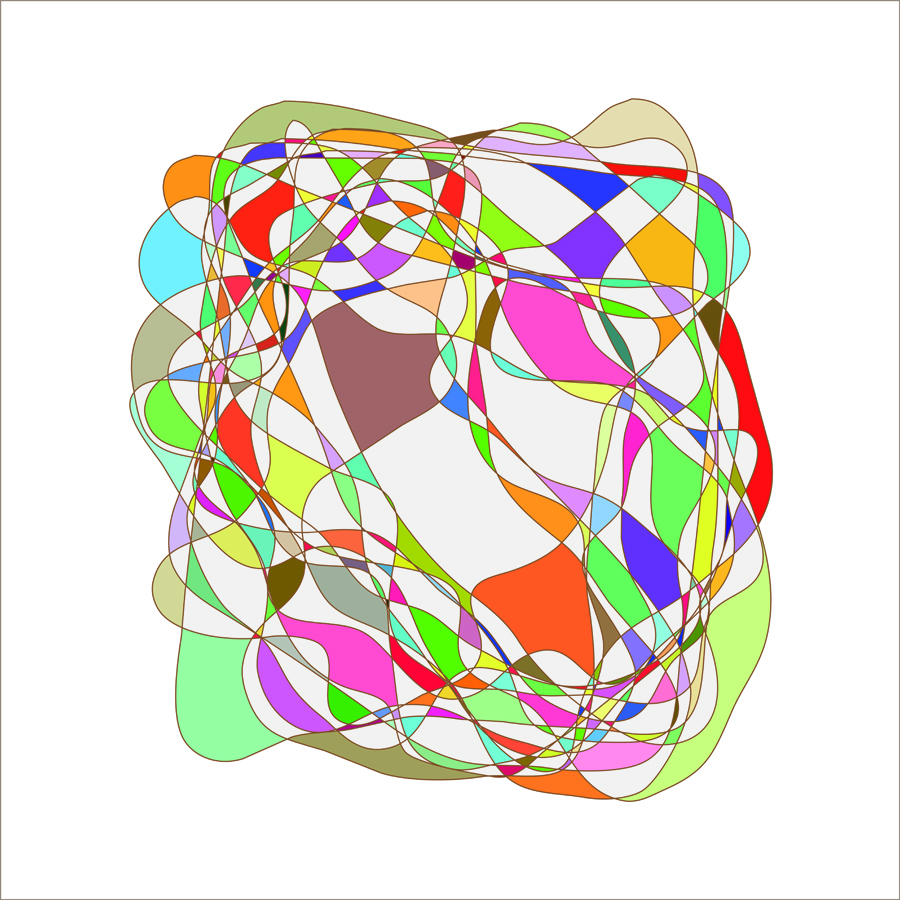
Shipsides and Beggs Projects, The Gatherings, 2020. Research development image, Another Fine Mess. Credit: Shipsides and Beggs Projects.
This image is a design for a series of interactive flatfooting dance-decks. These wooden dance-decks are designed with an internal system to amplify and modify the sound produced. The graphic design derives from overlays of USA, Mexican, Northern and Southern Ireland border states and counties. They play with the idea of borders and boundaries—but do so with a sense of neighbourliness, when people come together and share. The Appalachian flatfooting tradition links to forms of Irish and English folk dance and is another wonderful example of reformulated and transformed culture.
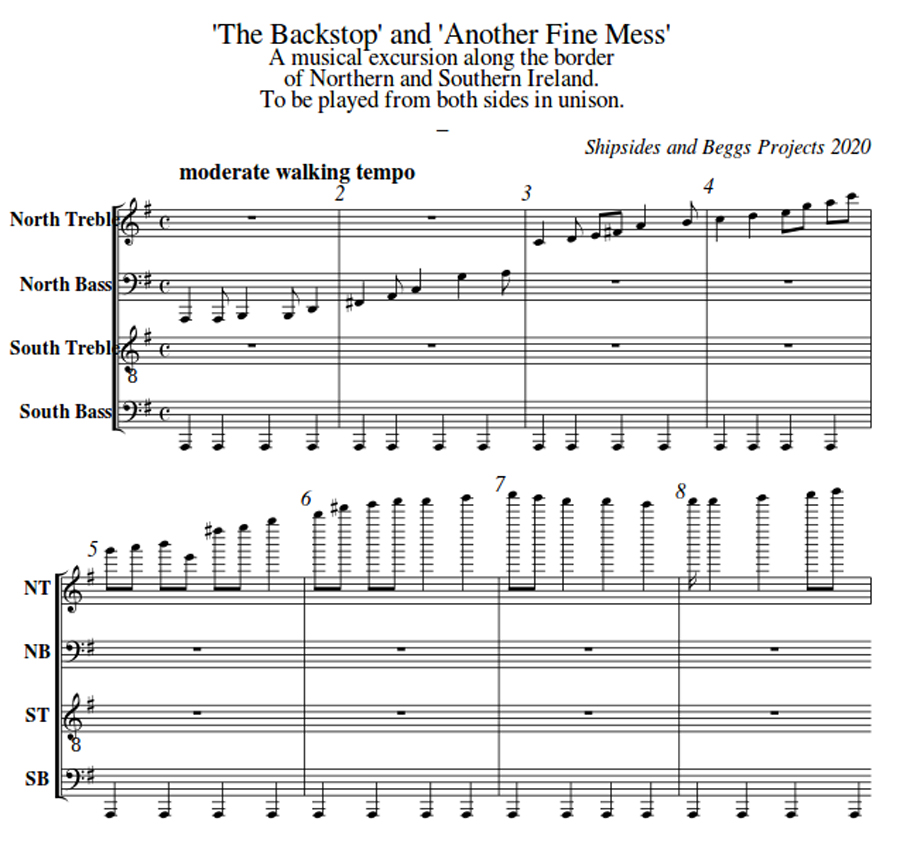
Shipsides and Beggs Projects, The Crossings (or The Backstop) – page 1 of 104, 2020. Music score, Another Fine Mess. Credit: Shipsides and Beggs Projects.
This work is an audio work to be launched online in July 2020, and as a vinyl disc in fall 2020. It is now titled The Crossings, but this might change as the work does. The audio work explores the topography of the Irish/UK border using mapping, computer programming, and musical composition to create an audio work which transposes elevation data of the border into music, in a poetic sense, as though a record needle was dragged across the surface of the terrain. Politically, this border is significant, very much so historically but also today. In the "Brexit" era, the “backstop” is a term referring to the backup plan if all negotiations in this fraught and foolish process fail. As the only land border the UK shares with Europe, this situation throws the work into critical focus.
The audio composition takes the data set (which runs roughly from southeast to northwest or from northwest to southeast) from both a northern and southern perspective. At its core, it plays a bilateral perspective, but in reality there are multilateral perspectives at play as the data is modified through many lenses and filters. It initially involved a complex set of calculations with a massive data set (where each data point marks a distance of 37 meters along the border) but progressively the work structures and modifies the material into a musical composition that is faithful to both the landscape and to the artists' responses to the subject matter.
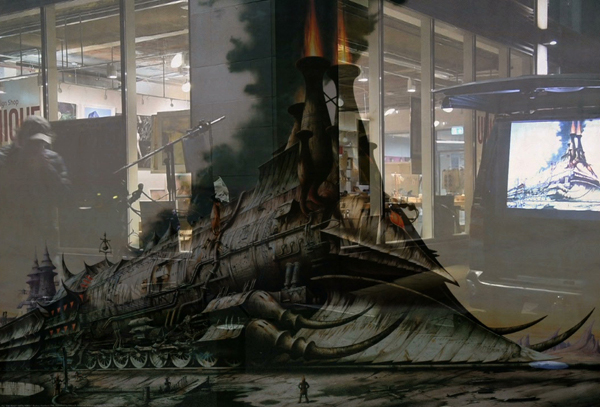
Wasbash Cannonball–Granite, Iron and Quartz. Video Still (video mix of Rodney Matthews’ Heavy Metal Heroimage and SBP performance). 2019. Credit: Matthews / Shipsides and Beggs Projects.
The foundations of Another Fine Mess embrace a scepticism towards borders, specifically of the reciprocity of Irish migration in respect to a foundling America. These sentiments and interests began formulation in a previous work, Wabash Cannonball –Granite, Iron and Quartz (2019), a performative exploration of the Wabash Cannonball, an esoterically named rock climbing route in the Mourne Mountains which led through granite, quartz, and iron to a tale of migration, railroad history, exploited labour, the protest movement, death coach mythology, and to the musicology of cultural landscapes.

County & State mixing chart. Research development image. Another Fine Mess. 2020. Credit: Shipsides and Beggs Projects.
This image comes from the design and research process of playing with state and county borders, particularly those on either the USA/Mexico border and those on the Republic of Ireland/Northern Ireland border. You can numerically and positionally match the number of states and counties quite well—so the Republic of Ireland counties match up with the Mexican states, and the US with the Northern Irish (this brings some interesting conceptual play-offs in itself). For example, west to east: California would mix with Londonderry, New Mexico with Fermanagh, Arizona with Tyrone, and Texas with Armagh. Then, it is possible overlay these and create hybrid states. The resulting graphic shapes begin to form Rorschach-type shapes, and in doing this the work starts to create imaginative links and new territories. In this sense, it intermixes culturally across two borders, four nations, numerous states and many counties, which perhaps is a reality that history often finds difficult to express and hold in the popular imagination.
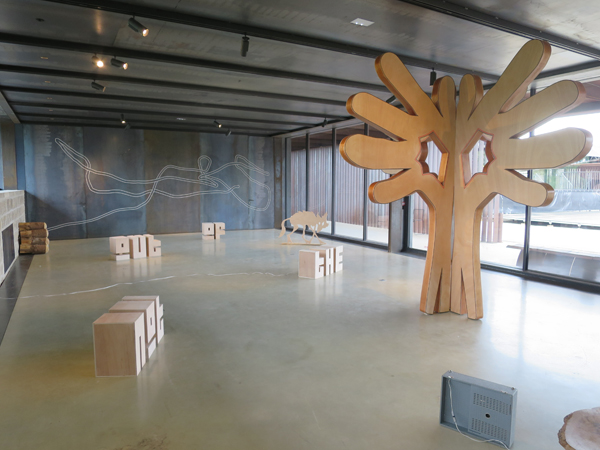
The Lament of the Accolade Tree. Installation view at La Cuisine Centre d’art et de design. 2018. Credit: Shipsides and Beggs Projects.
The Lament of the Accolade Tree was an exhibition in France (2018) where the central works are the Accolade Tree set amongst a sculptural text work spelling out the phrase Still Not Out Of The Woods. Both the Accolade Tree and Still Not Out of the Woods are key motifs that Shipsides and Beggs have been exploring for years. The Accolade Tree is designed as an acoustic device. It is built in four quarter sections using the construction materials and techniques of traditional acoustic guitar construction, so that the tree amplifies any noise brought into contact with it.
The Still Not Out of the Woods text pieces are essentially cajón style constructions—which like the Accolade Tree are acoustic artworks. The phrase itself is important to the artists in pointing to the ongoing slide from crisis to crisis(as exemplified in Europe by WW1 to which geo-politically still connects to much of contemporary European politics) while never resolving situations or coming to "safety." In history, the woods tended to be places of danger. However, today there is a twist where we must, at least ecologically, see the woods as a vital resource and component of our futures—and perhaps a place of refuge or a staging place—the "jungle."
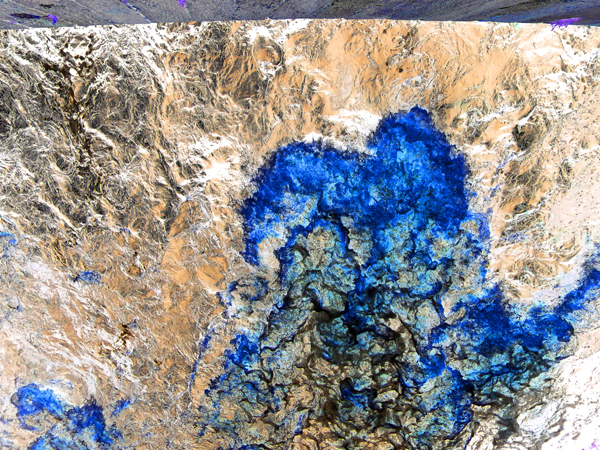
Cola Stream Dream. Research development image. Another Fine Mess. 2020. Credit: Shipsides and Beggs Projects.

The Accolade Tree, 2017. Woven patch. 10 x 12 cm. Credit: Shipsides and Beggs Projects.
The tree-hands design has been a fun and key motif in Shipsides and Beggs’ practice for some years. Originating from WWI "no man's land" reconnaissance posts, fabricated to look like bombed-out tree stumps, they have then mixed this motif through with Shamanism (masks), Charlie Chaplin (Shoulder Arms, 1918), David Bowie (with his hand gesture c. 1972) and other popular or folk culture regarding special trees (e.g. The Singing Ringing Tree). Another interest in trees comes from the treeline in high mountain terrain, where broadly the treeline marks a shift in territory from habitable to non-habitable—so, in a poetic sense "we all live beneath the tree," echoing biblical, folksong, and modern idylls of the glade (e.g. Le Déjeuner sur l'herbe, the Soldier and the Lady, and Adam and Eve). The popular song "The Lonesome Pine" (1912) also acts as a fun and pertinent metaphor for this sense of isolation and yearning for love and humanity.
The tree as a motif also feature heavily in the radical shift in landscape painting as the Impressionists and their forebears turned away from the slicker motifs of the Salon to a more direct engagement with their subject and a more embedded practice. Their choice of the tree might be understood a deference to the wisdom of the natural world and mans' place within it, rather than the dominion of nature or romanticism that previous perspectives wrought. In a sense, the Accolade Tree motif plays with the idea of trees observing humanity. Perhaps the trees were, or are, regarding the painters, or us, as much as the painters regarded the trees. The lament of the accolade tree (aka the Cherry Blossom which blooms with a spectacular flowering) is an open lament for humanity.

Neal Beggs and Dan Shipsides. Credit: Shipsides and Beggs Projects.
Neal Beggs and Dan Shipsides looking tired and dishevelled outside Dan’s shed in Belfast.

Shipsides and Beggs Projects, Fingers Grow Gnarled in the Watery Pass, 2020. Plywood structured frame and painted canvas, plywood paddles, 92.5 x 19.7 x 13.8 in. Courtesy of Shipsides and Beggs Projects.
This canoe structure is Shipsides and Beggs’ own design, based on a hybrid between a traditional Native American/Canadian canoe, a pioneer-era canoe, and a traditional Irish currach—a wooden frame over which material is stretched and painted. It’s one of two canoes made for the Another Fine Mess project.
These works are really paintings: painted canvas on stretcher.
This one refers to the "Bloody Pass," a secretive crossing place on the border where the artists crossed in their canoe. It is a place of a Williamite massacre, where the bodies of the Jacobean dead formed a land-bridge and the blood coloured the waters nearby. You now have to trespass, pushing through overgrowth and reeds to cross the border here, and the overwhelming feeling is of the spookiness of knowing the shallow waters hold the bodies of several hundred men.

Another Fine Mess is the latest chapter within a series of fictional narratives and themes explored through Shipsides and Beggs’ work. It follows on from Still Not Out of The Woods and fits alongside other narratives: The Iron Way and The Lament of the Accolade Tree.
Another Fine Mess was to be a new Shipsides and Beggs Projects exhibition—video, painting, interactive sculpture and audio work—deriving from their leftfield explorations of the terrains around the border between Northern Ireland and the Republic of Ireland with a wider extrapolation exploring the messiness of connections and migrations of culture, people, and textures, with particular interest in the reciprocity of Irish migration in respect to a foundling America. In this respect, it drew on previous work, an exploration of the Wabash Cannonball—an esoterically-named rock climbing route in the Mourne Mountains which led through granite, quartz, and iron to a tale of migration, railroad history, exploited labour, freedom, death coach mythology, and to the musicology of the landscape.
The exhibition fell foul to COVID-19 and perhaps therefore in absence marks a time where everything changed. The crated physical work made it only as far as Dublin Airport whilst the video Where the Lines End and audio work The Crossings have moved on to absorb the new realties.
The audio work explores the topography of the Irish border using mapping, computer programming and musical composition to create an audio work, as a vinyl disc, which transposes elevation data of the border into music, in a poetic sense, as though a record needle was dragged across the surface of the terrain. The video artwork captures much of the strangeness of the subject matter and the changing world thereafter. It initially draws from a road trip where the artists explored the borderlands by foot, van and canoe, re-treading the landscapes, mythologies and geologies of both a fluid place of imagination and a concrete place of fact. Completed during the lockdown era, both of these works absorb and display the rapidly changing effects of a global crisis.
The other physical works included; a series of thirteen painted star-maps of the Irish border Tear in the Fabric - Dálriata; two hand-made painted canoes, Fingers Grow Gnarled in the Watery Pass and Icy Hands Hold us Afloat, which draws on geological, folkloric, and historical sources; and The Gatherings, a series of amplified flatfooting dance-decks, whose design derives from overlays and combinations of the land borders of the UK, Ireland, Mexico, and the USA.
Shipsides and Beggs Projects are an artistic duo of Dan Shipsides and Neal Beggs based across Ireland, UK and France.
Project Assistant: Thomas Bontemps


